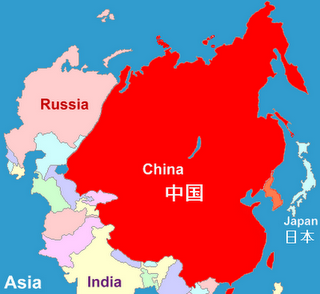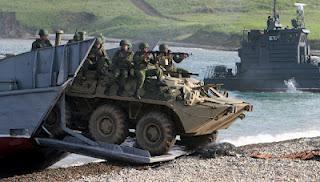 On November 14, 1860, the representatives of Czarist Russia and Qing China signed what is known as the Russo-Chinese Convention of Peking. As a result, all the lands north of the Amur and east of the Ussuri rivers were ceded to Russia. By taking advantage of the weakness of the Heavenly Empire, prostrated by the two Opium Wars against Britain, the Russians annexed 350,000 square miles (910,000 km2) of Chinese territory. Little more than a century later, in 1969, the clashes between the troops of the Red Army and the People’s Liberation Army along the Ussuri would have reminded the world how potentially precarious is the border that still divides Russia from China.
On November 14, 1860, the representatives of Czarist Russia and Qing China signed what is known as the Russo-Chinese Convention of Peking. As a result, all the lands north of the Amur and east of the Ussuri rivers were ceded to Russia. By taking advantage of the weakness of the Heavenly Empire, prostrated by the two Opium Wars against Britain, the Russians annexed 350,000 square miles (910,000 km2) of Chinese territory. Little more than a century later, in 1969, the clashes between the troops of the Red Army and the People’s Liberation Army along the Ussuri would have reminded the world how potentially precarious is the border that still divides Russia from China.
Since the end of the Cold War, in the second half of which communist China was a de facto ally of the United States, relations between Moscow and Beijing have substantially improved. Today, the Russian Federation and the People’s Republic of China are strategic partners, united in the fight against both US unipolarism and Islamic fundamentalism. The most visible expression of the renewed cooperation between the two Asiatic giants is the Shanghai Cooperation Organization (SCO). Funded in Shanghai in June 2001, the inter-governmental organization composed by China, Russia, Kazakhstan, Kyrgyzstan, Tajikistan and Uzbekistan is perceived by many as the first step toward the creation of a new Warsaw Pact in anti-American function.
Are we therefore approaching a new Cold War between the Sino-Russian bloc and the West? Not necessarily, since the Amur issue remains unsolved, and its importance is even increasing as a consequence of Russia’s demographic crisis. In a 2007 report from the Hudson Institute entitled “The Great Siberian War of 2030,” the Senior Fellow Laurent Murawiec outlined the risk of a military conflict between a depopulated Russia and an overpopulated China for control of the enormous land mass east of the Urals. By that time, with a population of just 5 million inhabitants always more isolated from Moscow, Siberia would have already been included into China’s policy of development for the “Great West” (Xībù Dàkāifā).
The eventuality of a war between Russia and China for control of Siberia and its natural resources is not at all unlikely. The Sleeping Land, which covers three-quarters of Russia’s territory, is currently home to only a quarter of the country’s population: 38 million people. Around 6 million Siberians live on the Russian side of the border with China, an insignificant figure compared to the 90 million Chinese living on the other side. The demographic imbalance between the two sides of the border is so marked that even Russia’s President Vladimir Putin once had to admit: “Unless we make a serious effort, the Russians in the border regions will have to speak Chinese, Japanese and Korean in a few decades.”
RUSSIAN TROOPS DURING THE “VOSTOK 2010” MILITARY EXERCISES
 In June 2010, the Russian general staff conducted the “Vostok 2010” military exercises, an open set of maneuvers designed not only to test the military but first, and perhaps foremost, to impress the Chinese military officials there present. Although the 2010 war games were to rapidly move thousands of troops from Europe to Siberia and the Far East, in a real crisis with Beijing, the Russian conventional forces could hardly stop or delay the advance of the People’s Liberation Army divisions without the using of tactical nuclear missiles. Russia’s conventional inferiority in the Far East is aggravated by the shortage of conscripts, another consequence of the country’s demographic crisis.
In June 2010, the Russian general staff conducted the “Vostok 2010” military exercises, an open set of maneuvers designed not only to test the military but first, and perhaps foremost, to impress the Chinese military officials there present. Although the 2010 war games were to rapidly move thousands of troops from Europe to Siberia and the Far East, in a real crisis with Beijing, the Russian conventional forces could hardly stop or delay the advance of the People’s Liberation Army divisions without the using of tactical nuclear missiles. Russia’s conventional inferiority in the Far East is aggravated by the shortage of conscripts, another consequence of the country’s demographic crisis.
Facing the eventuality that Russia may soon become a mere material-supplying appendage of Greater China, late last year Putin launched his project for a Eurasian Union, to be established on the basis of the already existing Customs Union of Belarus, Kazakhstan and Russia. By creating a Russian-led economic bloc, Moscow would increase the diversification of Russia’s economy, and establish an efficient barrier to further Chinese expansion into its former empire. The future of Russia as a major power in Eurasia is therefore tied hand in glove with the success of Putin’s initiative, and with it also the fate of one of the richest and less populous lands in the world: Siberia.

